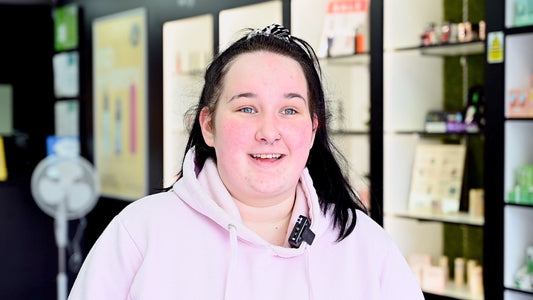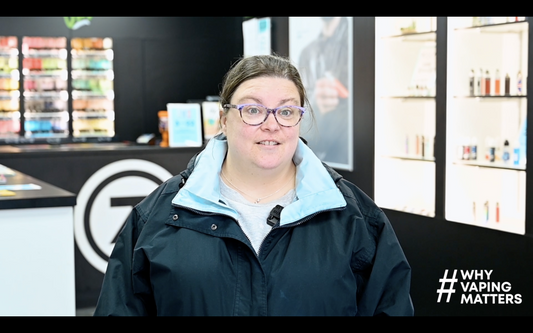Why Vaping Matters
Read the stories of our customers and staff on how vaping has changed their life for the better.

Take our Quiz copywriting needed here that’s punchy

Meet Amy
Meet Amy! She switched to vaping 4 years ago and shares with us the differences she has noticed since making the switch.
Meet Amy
Meet Amy! She switched to vaping 4 years ago and shares with us the differences she has noticed since making the switch.
Find out more
Meet Laura
Meet Laura! She switched to vaping 4 years ago and shares with us the differences she has noticed since making the switch.
Meet Laura
Meet Laura! She switched to vaping 4 years ago and shares with us the differences she has noticed since making the switch.
Find out more
Meet Tracy
Why Vaping Matters: Tracy’s story Meet Tracy! She switched to vaping 5 years ago and shares her experience since switching. What made Tracy want to switch to vaping? Tracy switched...
Meet Tracy
Why Vaping Matters: Tracy’s story Meet Tracy! She switched to vaping 5 years ago and shares her experience since switching. What made Tracy want to switch to vaping? Tracy switched...
Find out more
Meet Cathy
Why Vaping Matters: Cathy’s story Meet Cathy! She switched to vaping 3 years ago and shares with us some of the changes she has noticed since switching. How long did...
Meet Cathy
Why Vaping Matters: Cathy’s story Meet Cathy! She switched to vaping 3 years ago and shares with us some of the changes she has noticed since switching. How long did...
Find out more
Meet June
Why Vaping Matters: June’s story Meet June! She switched to vaping 8 years ago and shares with us the benefits she has noticed since making the switch. Why did June...
Meet June
Why Vaping Matters: June’s story Meet June! She switched to vaping 8 years ago and shares with us the benefits she has noticed since making the switch. Why did June...
Find out more
Meet Ronnie
Why Vaping Matters: Ronnie’s Story Meet Ronnie! He switched to vaping 15 years ago and tells us all about the benefits he has noticed. What was his experience of smoking...
Meet Ronnie
Why Vaping Matters: Ronnie’s Story Meet Ronnie! He switched to vaping 15 years ago and tells us all about the benefits he has noticed. What was his experience of smoking...
Find out more- Why Vaping Matters
- Why Vaping Matters
- Why Vaping Matters
- Why Vaping Matters
- Why Vaping Matters
- Why Vaping Matters
- Why Vaping Matters
- Why Vaping Matters
- Why Vaping Matters
- Why Vaping Matters
- Why Vaping Matters

